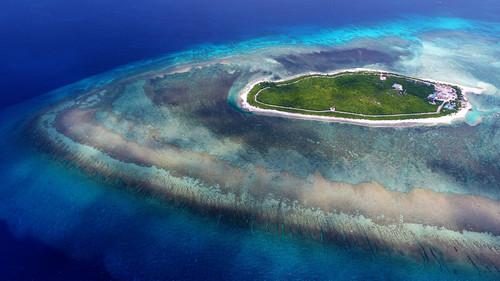Commentary: US, Japan, Australia still troublemakers in South China Sea
By Jia Xiudong (People's Daily Online) 18:50, August 11, 2017

ASEAN countries and China recently approved a framework for a code of conduct in the South China Sea at a ministerial meeting between the two parties.
It will greatly promote China-ASEAN ties and better protect peace and stability of the sea and even the region at large.
However, the U.S., Japan, and Australia issued a joint declaration, pointing fingers at China on the South China Sea issue. The declaration goes against the efforts of China-ASEAN cooperation to maintain peace and stability in the region, making trouble for the China-ASEAN Ministerial Meeting.
It is not the first time for the three countries to do so. Last year they issued a joint statement during the East Asia Summit Foreign Ministers’ Meeting, hyping up the South China Sea issue and inciting regional tension.
Chinese Foreign Minister Wang Yi refuted the joint statement, saying that the three countries should support the efforts by China and ASEAN in implementing the Declaration on the Conduct of Parties in the South China Sea and the settlement of the dispute through dialogue and consultation by countries directly concerned if they truly want stability in the region. Wang added it was the time to test whether they are peacekeepers or troublemakers.
However, these three countries started making more trouble this year. They tried to dip their hands in the process of peaceful settlement of the South China Sea issue in an even more obvious manner, releasing negative signals to the world.
As a result, Wang once again wondered whether some countries are unwilling to see the stabilized situation in the South China Sea or whether further stabilization does not conform to the interests of these countries.
It seems like that these countries, which are located outside of the region, are determined to be troublemakers in the South China Sea. It has become an uncommon “norm” for the issue.
So what is really behind the joint statement of the U.S., Japan, and Australia?
In 2010, the U.S. delegation managed to make speculation on the South China Sea issue and broke the peace of the region at the ASEAN Regional Forum, the predecessor of the East Asia Summit Foreign Ministers’ Meeting, cooking up an excuse for the promotion of Asia-Pacific Rebalance strategy.
In addition, the country’s change of government has had no impact on its strategic vision to stir up trouble in the South China Sea.
The Shinzo Abe Administration of Japan has been catering to the U.S., in a bid to promote its right-deviation diplomatic and security strategy. The country may take a negative attitude or even make a mess whenever it comes to the matters that are beneficial for China’s diplomacy, while exploiting or adding fuel to the matters that challenge it.
Australia, which failed to find a balance between its economic dependence on China and security dependence on the U.S., is also making trouble in the South China Sea.
These three countries have the same target, worrying that they might be marginalized if China and ASEAN work together well on the South China Sea issue.
Even the Philippines, a party directly concerned, has stopped making a fuss about it, while the three countries above are still creating conflicts.
However, their practice has been slammed by Philippine Secretary of Foreign Affairs Alan Peter Cayetano. He said that the country will decide what is good for them and what strategies are good for them because they are a sovereign nation.
Compared with the past, when these countries instigated troubles behind the scenes, they are now coming onto the stage after claimants in the South China Sea adopted different and positive attitudes.
No matter how well they hide behind the banner of justice, they cannot hide their real intention as troublemakers.
China and ASEAN countries have successfully stabilized the situation in the South China Sea through patience, strategic willpower, and sincerity. Practices to destroy this hard-won result will never be allowed.
To safeguard the situation is to promote the development of history, while to destroy it is to go against the trend of history. The South China Sea troublemakers should be fully aware of it.
(The author is a contributing commentator of People’s Daily and distinguished research fellow of China Institute of International Studies)
No comments:
Post a Comment
Comments always welcome!